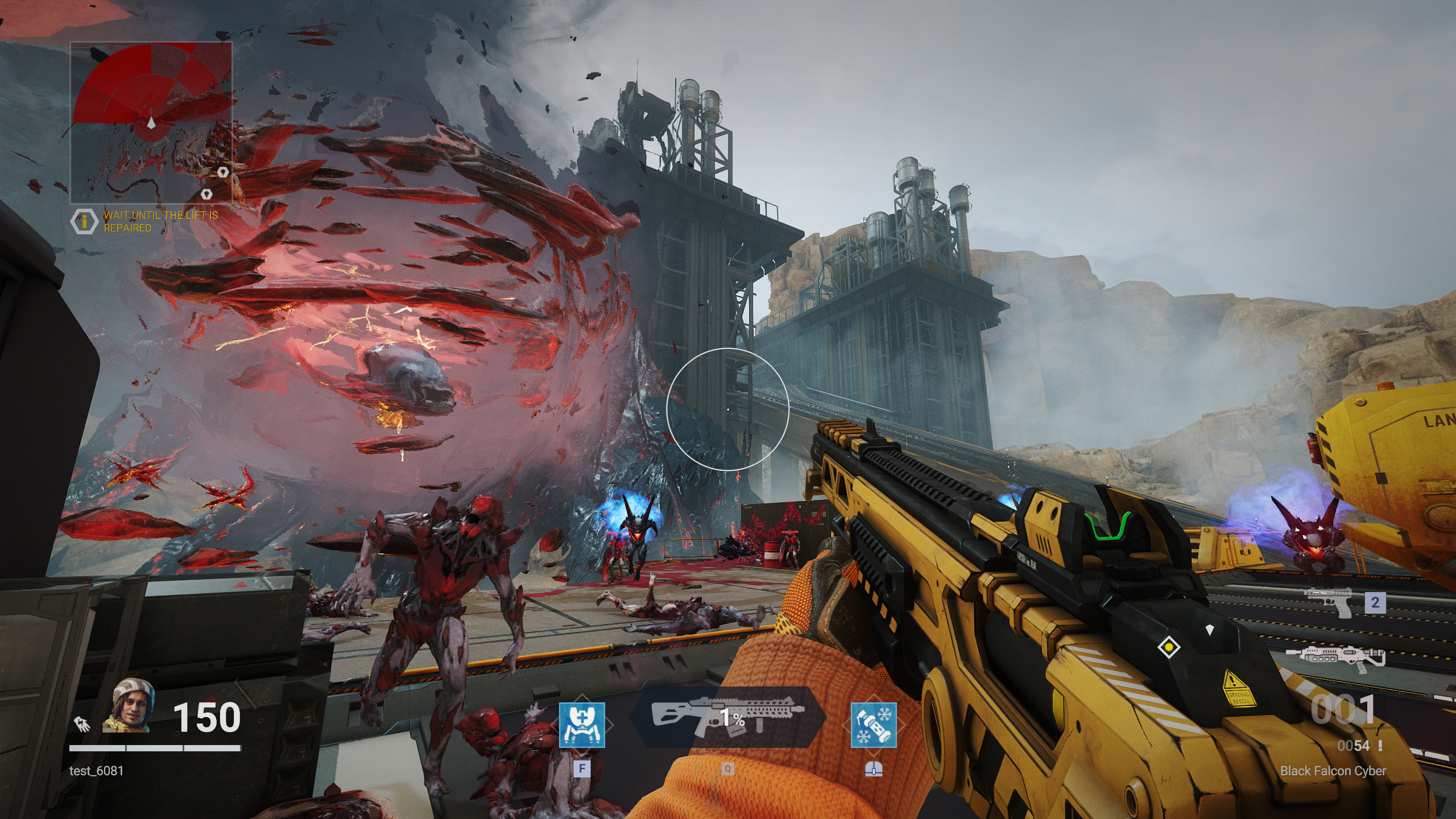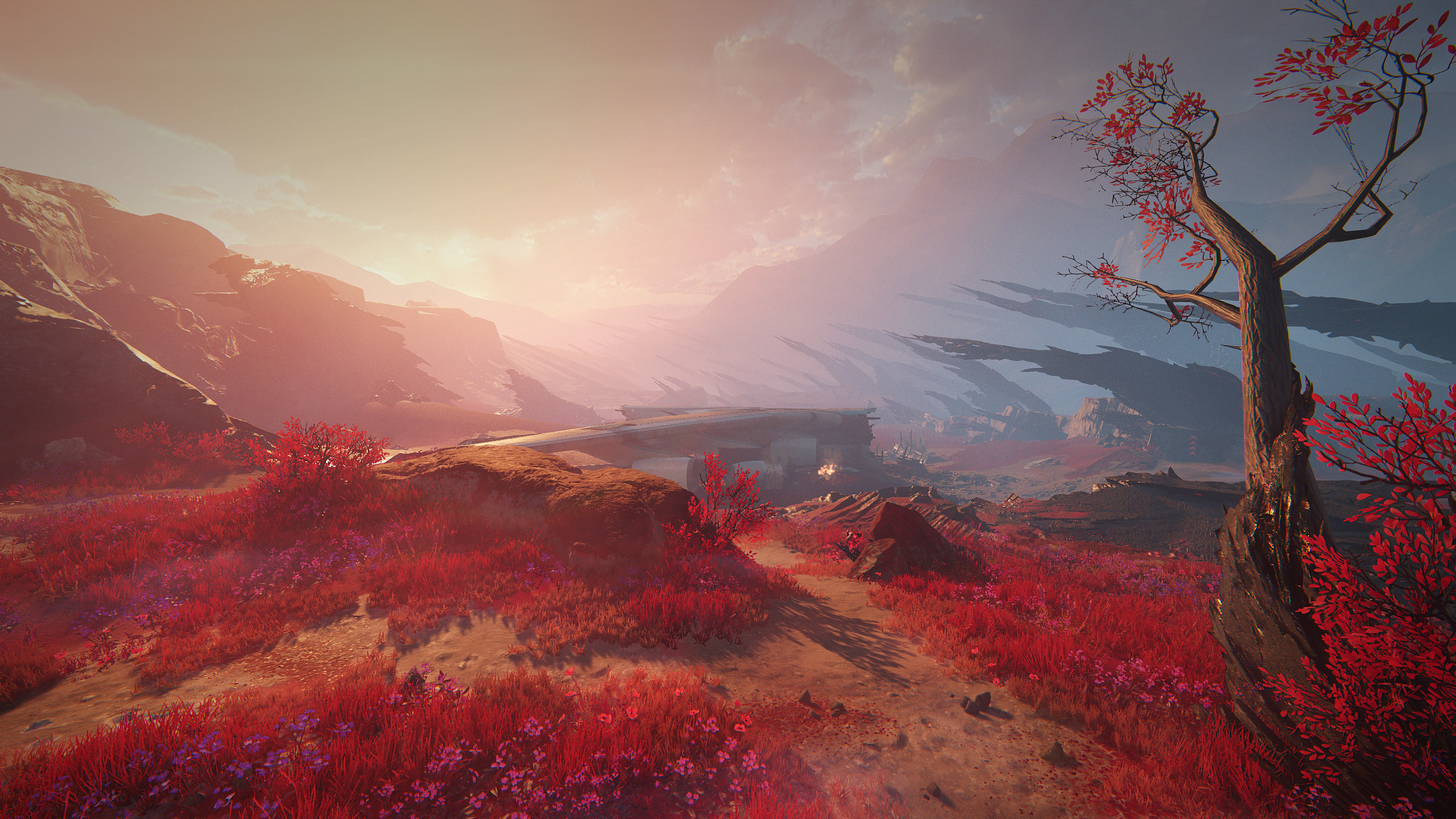Steam's latest F2P shooter is half CoD clone, half surprisingly great co-op FPS
Shatterline is a throwback to the sort of shooter I stopped playing in middle school, but its PvE mode is strong.

There is no more tired, derivative aesthetic in gaming than corrupting red crystals that turn people into zombies. Despite my harsh anti-crystal/anti-portal agenda, Shatterline's roguelike-inspired Expedition mode seized the better part of my weekend. Even though it lacks the polish (and visual interest) of big-budget first person shooters, Shatterline is a promising free-to-play FPS on Steam that has a lot to offer for no buy-in.
Shatterline's derivative crystal-core aesthetic (think Control, Chorus, or Metal Gear Survive) and near-future, exosuit-clad dudebros create a very "2010s console shooter" vibe. There's an attempt at a narrative—Shellguard operatives, who use crystals in a good way, need to stop the "Crystalline," the agent of a mad god beyond the stars. There are also some mooks calling themselves "The Strafe," human followers of the Crystalline who think the laughably evil looking red energy crystals are sacred and healing, but they're a bit more "blood and soil" about it than your new-age Facebook friends. These guys are capital-g Goons, shouting "For the crystals!" as you mow them down. The fluff here is lightweight and overstuffed with proper nouns, riding a grating thin line between inoffensive and offensive blandness.
Shatterline's PvP is a mix of familiar gametypes: Payload, bomb defusal, team deathmatch. Each Shellguard Operative has a couple distinct tools, but these are mostly accents to individual playstyles. A crystal-based grenade here, a scouting drone, the works. There's some neat map interactivity though: physics objects and doors can be kicked Duke Nukem-style to open up new pathways and roll cover into would-be killzones. The time-to-death is all over the place, and largely the result of primary weapon fire, so there's little incentive for tight synergized team play like in Rainbow 6: Siege or Overwatch.
Strictly F2P players can flip through a random selection of operatives that rotates every match, which is totally serviceable for casual play. For a reasonably monetized F2P shooter, it's definitely adequate, but still insubstantial. Shatterline rarely feels like something distinct from the older Call of Dutys it's pulling from. The cosmetic progression is weak, too. I found it tough to get excited about unlocking new sets of fingerless gloves for guys that only really say variations of "It's go time."
Weapons are operating in that same trite near-future visual framework: the blocky, rugged assault rifle fills the role of an AK-47, and its sleeker, more rectangular brother functions like an M4, etc. There's a familiarity here that may be endearing to fans of the near-future Call of Duty games, (Black Ops 2, 3, & 4 specifically), with unfortunately similar gunplay. The Modern Warfare 2 beta was all over the place in terms of modes, balance, and maps, but man, those guns. MW2's assault rifles sound like artillery batteries going off in sequence. In contrast, Shatterline's weapons feel like they've been ripped out of a 5-10 year old shooter, with little to no recoil, tinny sound, and a PvP time-to-death that confusingly feels both too long and too short, owing to jittery hit detection.
I know MW2 probably got primo access to dark money military consultants to make modern war look as badass as possible, but there's a new standard for how guns feel that Shatterline needs revamped sound and a more consistent damage model to reach.
For me, Shatterline's primary draw was the eerie nordic hillsides you explore in Expeditions, a PvE side mode styled after Destiny's Strike missions that's interwoven with PvP progression. Deploying battle royale style into a semi-randomly generated map, you and two others (friends, ideally) serpentine your way through a mix of silicate cliff faces and slag-strewn countryside, clearing out cultist encampments and crystalline zombie hordes, pushing towards supply drops and boss encounters that provide weapon schematics for use in the PvP mode. There's a refreshing amount of freedom here—in stark contrast to the PvP experience, Expedition's open-ended structure and play space incentivize a methodical, considerate approach to tough-as-nails combat. I found that exploration typically yields more rewards than beelining towards the objective, and the critically important supply drops can often be teased out from baiting predictable enemy spawns.
Keep up to date with the most important stories and the best deals, as picked by the PC Gamer team.
It's not a world full of surprises—random combat encounters materialize every couple hundred meters, almost always at forks between branching paths, but I was still getting great gear from finding cool little research stations, crystalline caves, and abandoned villages.
Something about the combat in the Expedition mode just clicks—positioning, elevation, accuracy, all things that felt secondary to pure reflexes in PVP are vitally important in expeditions. I found myself easily overwhelmed by even the weakest of enemies when caught unaware, something that happened often thanks to some clever AI. Shatterline's bestiary loves hit-and-run tactics, so taking them out required coordinated group fire. Oftentimes I'd be desperately firing off a whole magazine at a sniper just outside of my optimal engagement range.

That line between hard-won victory and crushing defeat is down to the cohesion of your team play, again something absent on the PvP side. It's a difference so striking that Shatterline feels like two different games awkwardly fused at the hip via an interwoven progression model.
Expeditions grow even more tense as they go on due to a "Contamination meter," which randomly applies meaningful combat buffs to enemies at key intervals throughout a run. You can exfiltrate from expeditions after tackling just one objective—often a Destiny-style combat puzzle, hacking a terminal and fending off waves of attacks—or you can push on, chasing better blueprints and more attachments. These encounters really impressed me. They're nail-biting firefights with limited opportunity for rest and resupply.
I do have to flag the mission chatter here for being unnecessarily distracting, though. The scientists who facilitate your missions will squabble and feud over each other's notes and citations over the course of these encounters, something so distracting that it got me killed twice.
Shatterline has a bit of an identity crisis. The PvP is a frustrating rehash of the kind of shooter I stopped playing in middle school, a free-to-play Black Ops 2 with crystals (ugh!). Although Modern Warfare 2 is introducing a similar PvE mode, it'll be tough to beat Shatterline's tense combat and open-ended missions, especially at the asking price of "free." especially when it successfully synthesizes the brain smoothing feedback loops of both Destiny 2 and Warzone. Shatterline is punching well above it's weight class, even if it's bringing old moves to the fight.

Nova Smith is a freelance writer based out of Alberta, Canada. Nova's grab bag of non-gaming interests and passions includes Japanese mecha anime, miniature painting, as well as history, literature, and classical music. Nova also moonlights as a bureaucrat and amateur historian.

